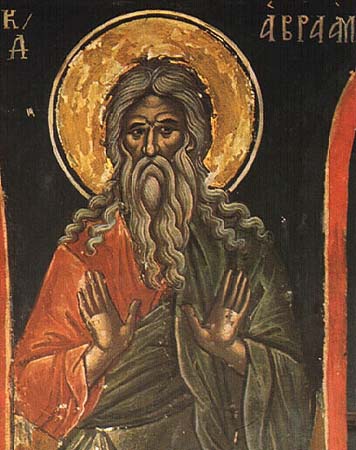
(Wikimedia Commons public domain image)
***
New, today, in Interpreter: A Journal of Latter-day Saint Faith and Scholarship:
Stephen O. Smoot, “Framing the Book of Abraham: Presumptions and Paradigms”
Review of Dan Vogel, Book of Abraham Apologetics: A Review and Critique (Salt Lake City: Signature Books, 2021). 250 pp. $18.95 (softback).
Abstract: The Book of Abraham continues to undergo scrutiny in both academic and polemical publications. The latest offering of substance in the latter category, Dan Vogel’s Book of Abraham Apologetics: A Review and Critique, criticizes the work of those who argue for the antiquity and inspiration of the Book of Abraham and makes a sustained argument that the book is, instead, modern pseudepigrapha written by a pious fraud (Joseph Smith) in the nineteenth century. Book of Abraham Apologetics lays out a particular naturalistic approach to this text that works best only when certain metaphysical and methodological assumptions are taken for granted. This approach, however, as well as most of his arguments against the Book of Abraham’s historicity, are severely undermined both by Vogel’s inability to properly assess the evidence and his metaphysical or ideological commitments. This review critiques Vogel’s critique of Book of Abraham apologetics and offers an alternative to his questionable framing of the text and its interpretation.
***
And, in case that’s not enough for the weekend, here are some links from a prior issue of Interpreter:
Abstract: This chapter argues that “the scriptural triad of faith, hope, and charity should be understood as something more than a general set of personal attributes that must be developed in order for disciples to become like Christ. Instead, as part of the ‘guarded tradition the Apostle’ [Paul] that is transmitted to readers in 1 Corinthians and elsewhere in scripture, these terms have been used to describe a distinct progression of ‘stages in a Christian’s earthly experience.’ The three stages that correlate to faith, hope, and charity were described by Joseph Smith as the ‘three principal rounds’ of a ladder of heavenly ascent. Each round marks a chief juncture in priesthood ordinances and on the pathway to eternal life.”
[Editor’s Note: Part of our book chapter reprint series, this article is reprinted here as a service to the LDS community. Original pagination and page numbers have necessarily changed, and movement of figures for pagination purposes may have altered some footnote numbering. Otherwise the reprint has the same content as the original.
See Jeffrey M. Bradshaw, “Faith, Hope, and Charity: The ‘Three Principal Rounds’ of the Ladder of Heavenly Ascent,” in “To Seek the Law of the Lord”: Essays in Honor of John W. Welch, ed. Paul Y. Hoskisson and Daniel C. Peterson (Orem, UT: The Interpreter Foundation, 2017), 59–112. Further information at https://interpreterfoundation.org/books/to-seek-the-law-of-the-lord-essays-in-honor-of-john-w-welch-2/.]
Abstract: Paronomasia in the Hebrew text of Exodus creates narrative links between the name Miriam (Mary) and the “waters” (mayim) of the Re[e]d Sea from which Israel is “pulled” and the nearby “bitter” waters of Marah. Nephi sees Mary (Mariam), the mother of Jesus, associated with the “love of God,” and thus to both “the tree of life” and “the fountain of living waters” (1 Nephi 11:25) vis-à-vis “the fountain of filthy water” (1 Nephi 12:16). Mormon was named after “the land of Mormon” (3 Nephi 5:12). He associates his given name with “waters,” which he describes as a “fountain of pure water” (Mosiah 18:5), and with the good “desires” and “love” that Alma the Elder’s converts manifest at the time of their baptism (Mosiah 18:8, 10‒11, 21, 28). Mormon’s accounts of the baptisms of Alma the Elder’s people, Limhi’s people, the people at Sidom (Alma 15:13), and a few repentant Nephites at Zarahemla who responded to Samuel the Lamanite’s preaching (Helaman 16:1), anticipate Jesus’s eventual reestablishment of the church originally founded by Alma, the baptism of his disciples, and their reception of the Holy Ghost — “that which they most desired” (see 3 Nephi 19:9‒14, 24). Desire serves as a key term that links all of these baptismal scenes. Mormon’s analogy of “the bitter fountain” and its “bitter water” vis-à-vis the “the good fount” and its “good water” — which helps set up his discussion of “the pure love of Christ,” which “endureth forever” (Moroni 7:47‒48) — should be understood against the backdrop of Lehi’s dream as Nephite “cultural narrative” and the history of Alma the Elder’s people at the waters of Mormon. As Mormon’s people lose the “love [which] endureth by faith unto prayer” (Moroni 8:26; see also Moroni 8:14‒17; 9:5) they become like the “bitter fountain” (Moroni 7:11) and do not endure to the end in faith, hope, and charity on the covenant path (cf. 2 Nephi 31:20; Moroni 7:40‒88; 8:24‒26). The name Mormon (“desire is enduring” or “love is enduring”), as borne by the prophet-editor of the Book of Mormon, embraces the whole cloud of these associations.
James E. Faulconer, “The Transcendence of Flesh, Divine and Human”
Abstract: In this essay, James E Faulconer confronts an age-old issue that seems to divide Latter-day Saint Christians from other Christians, namely, “what it means to say that God is transcendent and embodied.” Early Christians also believed that God is embodied and transcendent, but with important differences in how that seemingly paradoxical combination of assertions can be explained. In his brilliant analysis, Faulconer shows how God “transcends us because He is embodied.”
[Editor’s Note: Part of our book chapter reprint series, this article is reprinted here as a service to the LDS community. Original pagination and page numbers have necessarily changed, otherwise the reprint has the same content as the original.
See James E. Faulconer, “The Transcendence of Flesh, Divine and Human,” in “To Seek the Law of the Lord”: Essays in Honor of John W. Welch, ed. Paul Y. Hoskisson and Daniel C. Peterson (Orem, UT: The Interpreter Foundation, 2017), 113–34. Further information at https://interpreterfoundation.org/books/to-seek-the-law-of-the-lord-essays-in-honor-of-john-w-welch-2/.]
Brant A. Gardner, “The Expanse of Joseph Smith’s Translation Vision”
Review of Samuel Morris Brown, Joseph Smith’s Translation: The Words and Worlds of Early Mormonism (New York: Oxford University Press, 2020). 314 pages. $34.95 (hardback).
Abstract: Samuel M. Brown opens up a new and expansive view of Joseph Smith as a religious thinker. Written for an academic audience, Brown is intentionally dealing with what can be seen and understood about Joseph Smith’s various translations, a term that Brown uses not only for texts, but for concepts of bringing the world of the divine into contact with the human domain. This is a history of the interaction of a person and the world of his thought, from the first text (the Book of Mormon) to the last, which Brown considers to be the temple rites.
John Gee, “Jesus’s Courtroom in John”
Abstract: John Gee gives us a sketch of the divine judgment as presented in the gospel of John. “In John’s gospel, the individual is the defendant; Jesus is the judge; the devil is the prosecuting attorney; and the Holy Ghost is the defense attorney.” Somewhat surprisingly, this model “fits more closely the Roman model of judgment than the Jewish one.” He concludes with a lesson for the reader: “Since all will have to stand before the judgment bar, all of us will need to heed the counsel of our defense attorney.”
[Editor’s Note: Part of our book chapter reprint series, this article is reprinted here as a service to the LDS community. Original pagination and page numbers have necessarily changed, otherwise the reprint has the same content as the original.
See John Gee, “Jesus’s Courtroom in John,” in “To Seek the Law of the Lord”: Essays in Honor of John W. Welch, ed. Paul Y. Hoskisson and Daniel C. Peterson (Orem, UT: The Interpreter Foundation, 2017), 135–50. Further information at https://interpreterfoundation.org/books/to-seek-the-law-of-the-lord-essays-in-honor-of-john-w-welch-2/.]
***
Today, I attended, virtually, the funeral of a member of my ward — a former California bishop and stake president and regional representative of the Quorum of the Twelve, more recently a patriarch, who had also presided with apparently unusual success and effectiveness over the France Paris Mission. A dentist by profession who lived into his nineties, he had three children, including two sons who were severely mentally challenged and who, like his wife, had predeceased him. Members of his extended family spoke, as did missionaries who had served under him in France and who spoke of him with exceptional affection and respect.
I hope that I still have a few days left in my own earthly sojourn. I continue to have very, very many things that I want to do. But death inescapably draws nearer for all of us every day, and I’ve come to treasure events like this one. As I reflect on good lives such as my neighbor’s, I realize how trivial most of what occupies and agitates us really is. Funerals are great lenses that focus our attention on the things that really matter. The reminiscences of friends and family often distill the most important elements of a life from all the distractions and irrelevancies. And I ask myself, as I increasingly do, What will people be able to truthfully say at my funeral? Am I living in a way that is congruent with my ideals and professions? Memorial services provide superb occasions for reflection and self-evaluation.












